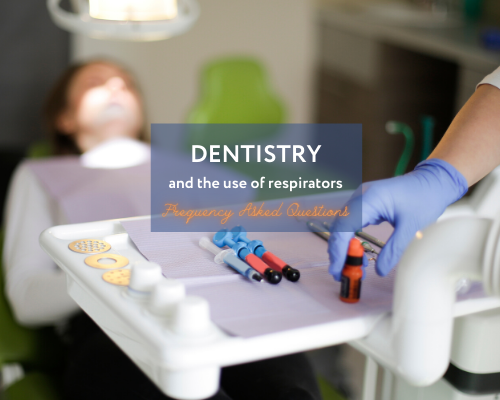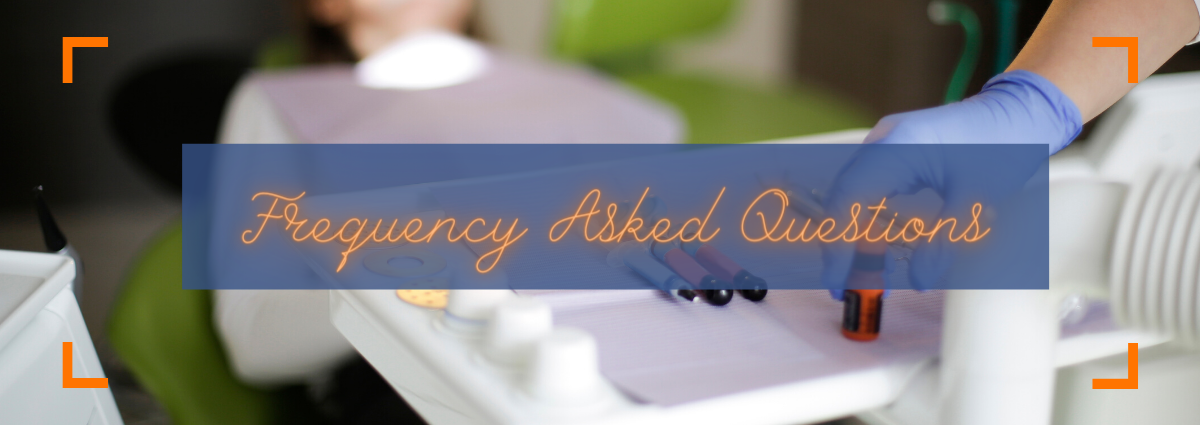
The most common questions dentists are asking about respirators
Covid-19
Facemasks


Covid-19
Facemasks
In June, we hosted a webinar with the British Dental Association (BDA), to shed light on understanding what respirators Dentists should you be selecting, what face fit testing involves and how to wear a respirator.
We have also answered the most common questions we received following that session, and you can now read them in this blog article.

It is stated in the COSHH Regulations that tight-fitting respirators must be face fit tested when used as a control against a hazard, therefore using respirators to mitigate the spread of a virus falls under this stipulation. The testing ensures the respirator is fitting the wearer and therefore protecting them as it should. Without testing, there could be significant inward leakage around the seal to the face, putting the wearer at risk.
FFP2 or FFP3 respirators that are fluid resistant or re-usable half masks with P3 filters. Loose-fitting positive pressure hoods can also be used as long as they are P3 filtered. Consider the effect a valve has on the mask; if it has exhalation valves (where your exhaled breath is expelled from the mask via a one-way valve) then the respirator is not protecting the patient. The choice needs to be matched to the wearer, environment, task and hazard.
Any respirator that relies on a tight seal to the face to provide protection must be face fit tested. This includes FFP2, FFP3 and re-usable half masks. Loose-fitting hoods that rely on positive pressure do not need face fit testing.
There must be no facial hair in the area where the tight-fitting respirator seals on to the face. Therefore wearers must be clean-shaven every day they use respirators and long hair must also be tied back out of the way. The alternative, if the wearer cannot be clean-shaven, is a loose-fitting hood that relies on positive pressure.
Anyone can carry out face fit testing but you must be able to show they are competent to do so. This is done through using an accredited face fit tester (e.g. BSIF Fit2Fit accreditation) or providing anyone else with adequate formal training.
Check for CE marking and if in doubt check the evidence for the CE certification (any supplier should have evidence of this). For example, KN95 respirators have been sold in the UK which has met standards for testing in other countries but do not have CE marking on them; these have been highlighted by the HSE as not being suitable for use in the UK as the standards for testing are not the same.
There should always be a selection of respirators to test with then face fit testing (at least one alternative), so that if a wearer does not fit one they can be tested with another. Different models from the same manufacturer or different makes will vary in size and shape, so an alternative should be possible. In extreme circumstances, you may need to resort to a loose-fitting positive pressure hood if testing repeatedly fails with different tight-fitting makes and models.
Unfortunately, all suppliers are experiencing shortages due to high demand and sometimes reduced production capabilities. The only solution is to keep looking around, but ensure you buy certified (CE Marked) products. Many suppliers will prioritise healthcare customers.
All the PPE needs to be compatible with each other. To ensure that it is, the other PPE should be worn, where practical, at the same time during a face fit test. This will check that it does not interfere with the fit of the respirator and can be worn together. There is guidance on the HSE and Fit2Fit websites on this.
The HSE and Fit2Fit guidance describe the methods applicable to different respirator types. Qualitative (taste) testing can be used for FFP2, FFP3 and half mask respirators, but not for full-face respirators. Quantitative (Particle Counting or Controlled Negative Pressure) can be used for all these types of respirator.
Most disposable respirators are only designed to be used once and thrown away (refer to manufacturer’s guidance). The reason being, once taken off it may not shape to the face properly when put back on and will be easily contaminated during doffing and re-donning.
Always refer to the manufacturer’s instructions and always change a filter if you think it is heavily contaminated. However, re-usable filters in such devices can normally be used multiple times. If used for too long, they will eventually clog up and become harder to breathe through, but in a clean environment, this should not happen over the course of just days. Good practice would be to change a filter regularly, but there is no set limit on time and it will depend on the environment, concentrations of particles, breathing rate and other factors. Gas and vapour filters are different; refer to manufacturer’s instructions for them too.
There is no set time limit for this in the UK, but the guidance does say that re-testing should be carried out regularly to capture any changes to the wearer (loss or gain of weight, and facial ageing etc) and must always be carried out if the respirator makes, model or size is changed. For dental applications and for mitigation against virus transmission we would recommend repeat testing every two years.
Manufacturers provide alcohol-based wipes for cleaning out respirators and others are available from other suppliers (ensure they are safe for skin contact). These must be used every tie the respirator is worn to ensure it is clean for use. Clean the respirator inside and out and follow instructions from manufacturers. For a regular more thorough clean, respirators can usually be immersed in warm water with a mild detergent (e.g. washing up liquid or manufacturer specific product). If doing so, follow the manufacturer’s instructions and ensure the respirator is dried properly and the valves are all in working order.